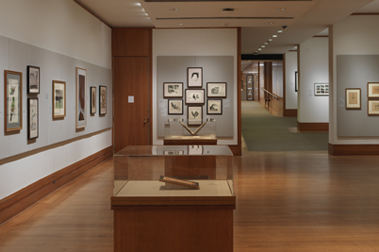Landscape
Not on view
Frédéric Juncker’s landscapes convey the subtleties of atmospheric conditions on a minute scale. In this spare rural landscape, a bright band of sky at the horizon suggests a difference of weather in the distance while additional ink and striation in the clouds above giving an overcast atmosphere to the immediate scene. In 1880, Juncker invented his own drawing method, which he called "dessin à la stéarine," and patented a specialized paper for the purpose. After coating the paper in wax, he created his composition with a mixture of wax, turpentine, and lampblack using a brush and various implements for wiping and scraping. The small-scale of his works is likely due to the quick drying nature of the wax medium. Juncker’s technique, unknown to art historians until now, exemplifies the experimental practices of artists working with black graphic media in late nineteenth-century France.
This image cannot be enlarged, viewed at full screen, or downloaded.

